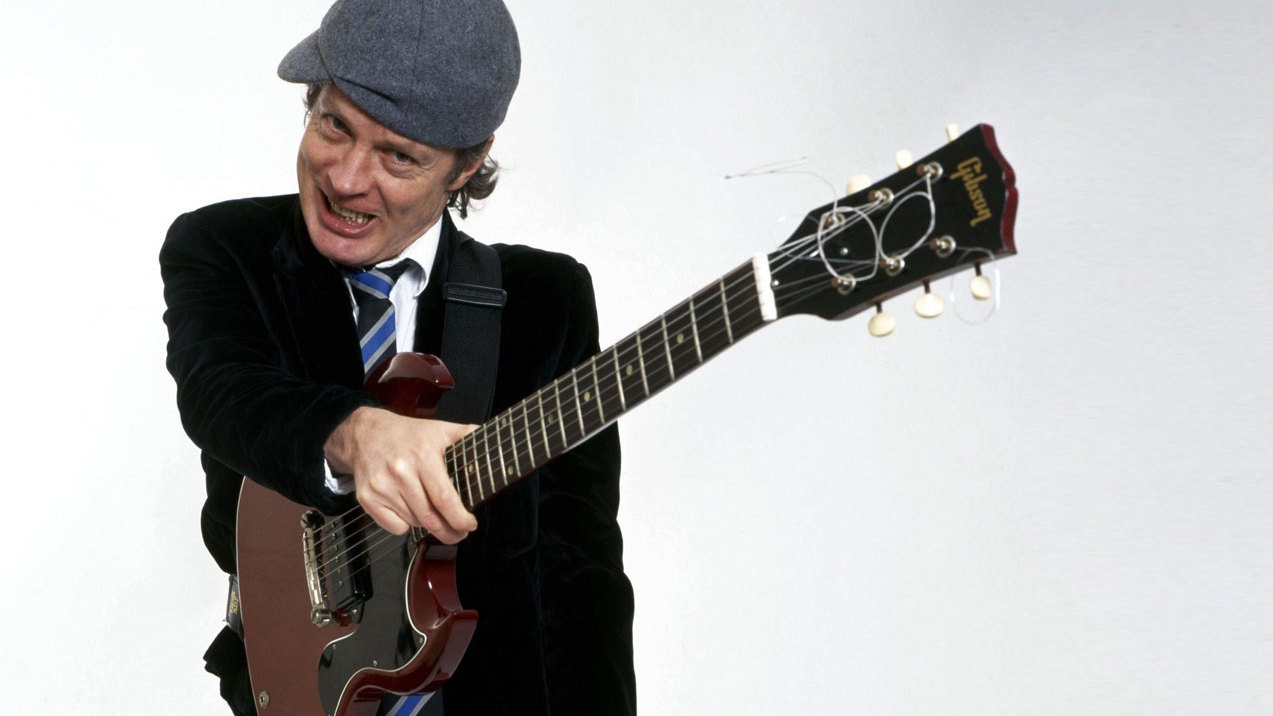If you had to put money on which model was the biggest selling Gibson solidbody guitar of all time, you’d likely take a punt on the classic single cutaway Les Paul. After all, it’s the Gibson with all the PR, brandished in its Standard and Custom guises b Jimmy Page, Slash, Mick Ronson, Peter Green, Joe Bonamassa, Sex Pistol Steve Jones and, well, the list goes on.
Well, you’re way off. It was the guitar that replaced the Les Paul that went on to secure the sales record if not the glory. The original Les Paul design was dumped in 1960 in favour of a new twin-cutaway, slab mahogany bodied guitar. Confusingly, from mid-1961 to 1963, these guitars were also labelled “Les Paul” models. By 1964, they were officially renamed as SGs (aka “Solid Guitar”).
In addition to the top-of-the-line triple-humbucker spec’d Custom model, the SG series also boasted the more affordable single P90 SG Junior and twin P90 SG Special, thrashed, thumped and trashed by Pete Townshend of The Who at Woodstock and the recording of Live At Leeds. The SG’s demonic twin-horn body-shape also formed the foundation of the entry-level Melody Maker launched in ‘66, the EB-0 and EB-3 basses and EDS-1275 double-neck played live by Jimmy Page on Stairway To Heaven.
After all that, it was the twin-bucker SG Standard that became the biggest-selling Gibson of all time, thanks in part to its status as a rock tool extraordinaire in the hands of gospel singer/guitarist and rock’n’roll pioneer Sister Rosetta Tharpe, Cream-era Clapton, and his “Fool” psychedelic oddity, Robby Krieger of The Doors, Beatle George during his Revolver period, Modfather Paul Weller and Southern rock and blues cats like Derek Trucks and Dicky Betts of the Allmans Brothers Band.
Two guitarists made the SG “cool”: Beatle George and Doors guitarist Robby Krieger. Listen to George’s blistering fuzzed-up isolated SG tone on The Beatles’ Paperback Writer and Krieger’s revolutionary playing on The End.
Of course, the men that fashioned the SG into the ultimate hard rock and metal guitar are Angus Young of AC/DC and Sabbath’s Tony Iommi. Here’s Tone inventing heavy metal with his SG…
The SG was born in Kalamazoo, Michigan, when Gibson president Ted McCarty, tired of Fender’s domination of the electric guitar market, decided to launch a lightweight model. Not only would this new guitar range replace the heavy maple/mahogany Les Paul models, McCarty hoped it would beat Fender at its own game: “Fender was talking about how Gibson was a bunch of old fuddie-duddies,” McCarty remembered in Vintage Guitar magazine, “and when I heard that through the grapevine, I was a little peeved. So I said, ‘Let’s shake ’em up.’ I wanted to come up with some guitar shapes that were different from anything else.”
It was the maple top - not the mahogany body core - that made the original Les Paul guitars so heavy. For the new guitar, the maple top was 86’d leaving a thin lightweight platform, with bevelled top and back, for an ultra-slim mahogany neck. The twin cutaways were deep for great upper fret access while the neck/body join was almost non-existent.
“I tried a Les Paul when I was a lot younger and because of the weight of the thing it nearly dislocated my hip,” Angus Young told Guitar World. “I’ve always found with SGs that if you are a short guy - about five foot two [laughs] - you can get your hands around them.”
It wasn’t just Angus that was happy. Gibson shipped around 1,700 Les Pauls between 1958 and 1960. In 1961 alone they shifted 1,662 SG-bodied Les Paul Standards and 513 Les Paul Customs.
In fact, the only person who wasn’t happy with the new range of guitars was Lester Polfus, aka Les Paul, the bloke with his name on the headstock.
There are various theories why he didn’t like the new models. Legend has it that the sly old fox was loathe to renew his contract with Gibson because his soon to be ex-wife Mary Ford would be entitled to a share of the proceeds.
It’s also possible that Les’ name was dropped by ‘63 because it just didn’t carry as much weight in the 60s as it had in the late 40s to mid 50s when he was a huge star. Of course, he might have genuinely disliked the design, or been irked that he wasn’t asked to contribute when the new models were being developed. The same thing happened in in ‘51/‘52 when the original Les Paul models were designed. Contrary to popular belief, Les’ role in the birth of his signature guitar was cursory.
Whatever the reason, he wasn’t best pleased: “They put out a Les Paul guitar, and it wasn’t with my blessings at all,” grumbled Les years later. “They put the pickup in the wrong place, they made the body too thin, you could pull on the neck and change keys, there were a lot of things wrong with it. So I said, ‘Clean that one up a little bit, will ya, before you put my name on it?’ So they took my name off it and continued to make it and it’s their Number One selling solid-body.”
- The Guitars That Built Rock: The Fender Stratocaster
- The Guitars That Built Rock: The Gibson Les Paul
- The Guitars That Built Rock: The Gibson Flying V
- The Guitars That Built Rock: The Gibson Firebird
Miffed or not, Les was right about the new Les Paul models’ flimsy necks and the weak point where it was glued to the body. Many early SG/Les Pauls have repaired headstocks and neck heels.
By 1964, the SG Standard design was perfected with a tune-a-matic bridge/stop tailpiece, a fatter neck and a stronger neck/body join. While the earlier models are worth more money to collectors, the ‘64 editions are the player guitars, favoured by Beatle George and Eric Clapton back in the day. Of course, if you had to pick the SG’s greatest moments it would have to be anytime it’s paired with a diminutive Aussie in a school uniform.

